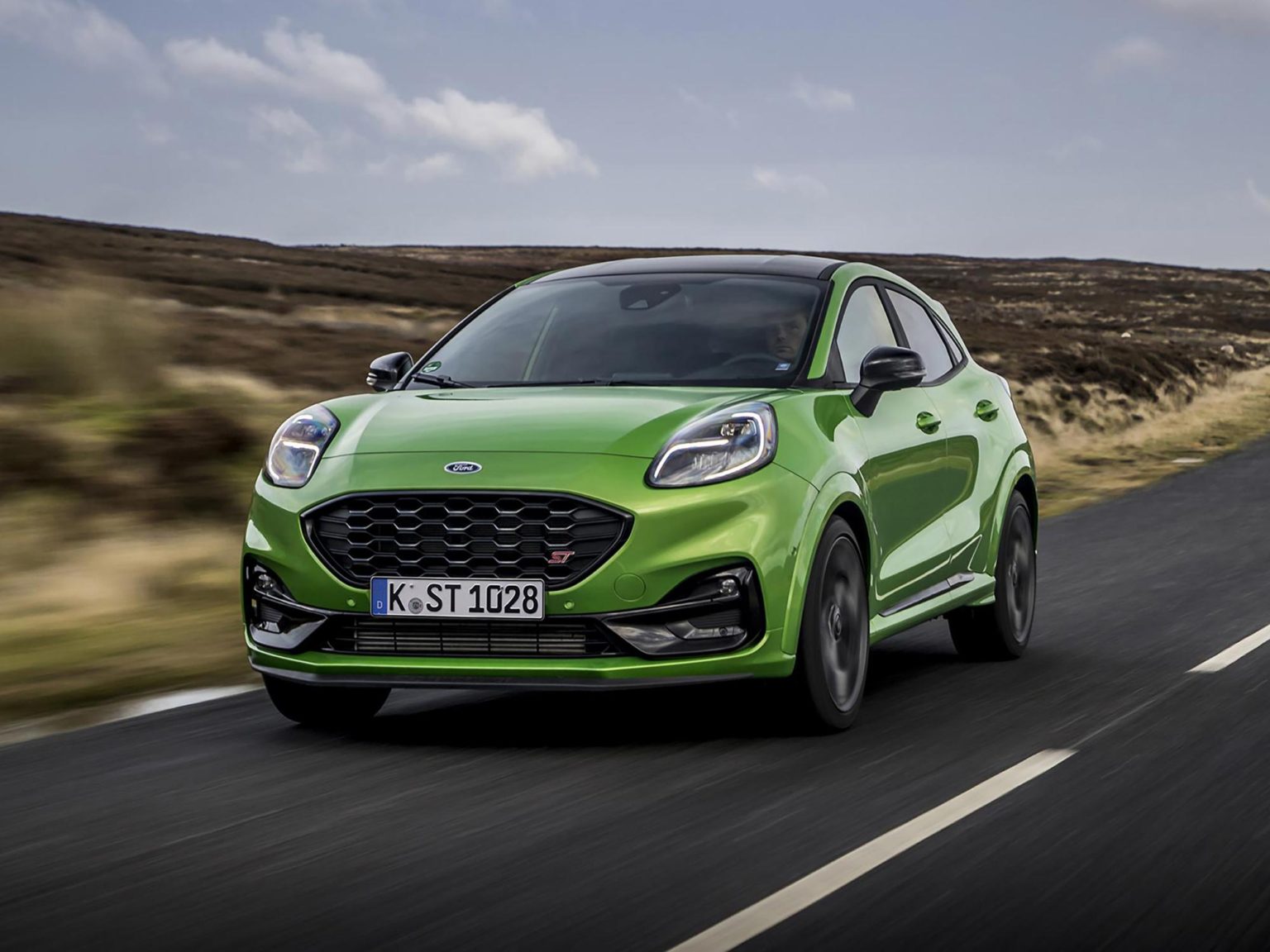Jim Farley is Ford Motor Company’s CEO. He’s only had the job for a few months so it’s understandable if he doesn’t quite understand the power he has. So, when Farley tweeted on February 15 that he wished that the new Ford Puma ST was available in North America, he received a lot of replies that read a lot like, “I think I know a guy…”
Let’s take a closer look at the Puma, try to figure out what it would replace in the Ford lineup, and see whether or not it could feasibly make its way to the U.S.
The Ford Puma ST is the most high-performance Puma you can buy.Photo courtesy of Ford Motor Company
What is the Ford Puma?
The Ford Puma is a compact crossover that was introduced in Europe for the 2020 model year. Its name comes from the Puma compact coupé, which was produced for Europe from 1997 to 2002.
The Puma is sold in four trim levels in Europe: Titanium, ST Line,, Vignale, and ST. The base Titanium model is pretty well equipped, but the Puma ST offers the best performance. The Puma ST is truly designed to be a hot hatch.
How big is the Ford Puma?
It’s based on the same platform that the Ford Fiesta is built on meaning that they’re both small by European standards and downright tiny by U.S. standards. The Fiesta fits two adults comfortably in the first row but the rear seat is best left to small children. The Puma is slightly bigger meaning that average-sized adults can sit there, albeit with the feeling of being a bit stuffed into a small space.

The Ford Puma is smaller than the Ford EcoSport, Kuga, Escape, Explorer, and Expedition.
Photo courtesy of Ford Motor Company
How does the Ford Puma compare to the Ford EcoSport?
The difference between the Ford Puma and Ford EcoSport is the same as the difference between the BMW X2 and BMW X3. The Puma and X2 are solidly in the crossover category while the Ford EcoSport and BMW X3 ride higher like more traditional SUVs.
The EcoSport has a slightly longer wheelbase than the Puma but the Puma is nearly six inches longer. EcoSport wins on width, being six inches wider than the Puma.
Front row Puma occupants have about the same amount of head- and shoulder room as they would in the EcoSport, but they are able to take advantage of nearly two more inches of legroom.
The Puma has substantially less cargo room than the EcoSport, both behind the second-row and with the rear seats stowed.

The interior of the Ford Puma ST features design choices to make it look street racing-ready.
Photo courtesy of Ford Motor Company
Will Ford get rid of the EcoSport in the U.S. and replace it with the Puma?
Despite being widely panned by critics, the Ford EcoSport sells reasonably well in the U.S. The automaker sold 60,545 of them in 2020. That’s about how many Nissan Kicks that were sold and 18,000 more than the total of Toyota CH-Rs that were purchased during the same time period.
Still, the EcoSport has a way to go to catch up to its chief rivals like the Hyundai Kona, Honda HR-V, Jeep Renegade, and Kia Soul.
As good as those sell, some even smaller SUVs are selling better, like the Chevrolet Trax. However, those models are priced low, under $20,000 to start in many cases. In the U.K., the Puma is priced to start at around $30,000 USD. That price tag wouldn’t fly in the States. Even with a $25,000 starting price, the Puma would start to have fierce competition from the larger and much more popular compact SUV segment.

The Ford Puma ST is a true hot hatch.
Photo courtesy of Ford Motor Company
Then there’s the dimensions. Americans are, generally, larger than Europeans. A car that is six inches narrower than the Ford EcoSport is quite compact by modern U.S. standards.
While there is room in the lineup, for now at least, the answer seems to be no, the EcoSport will likely not be replaced by the Puma, nor will the Puma be added to the offerings at U.S. dealerships.








